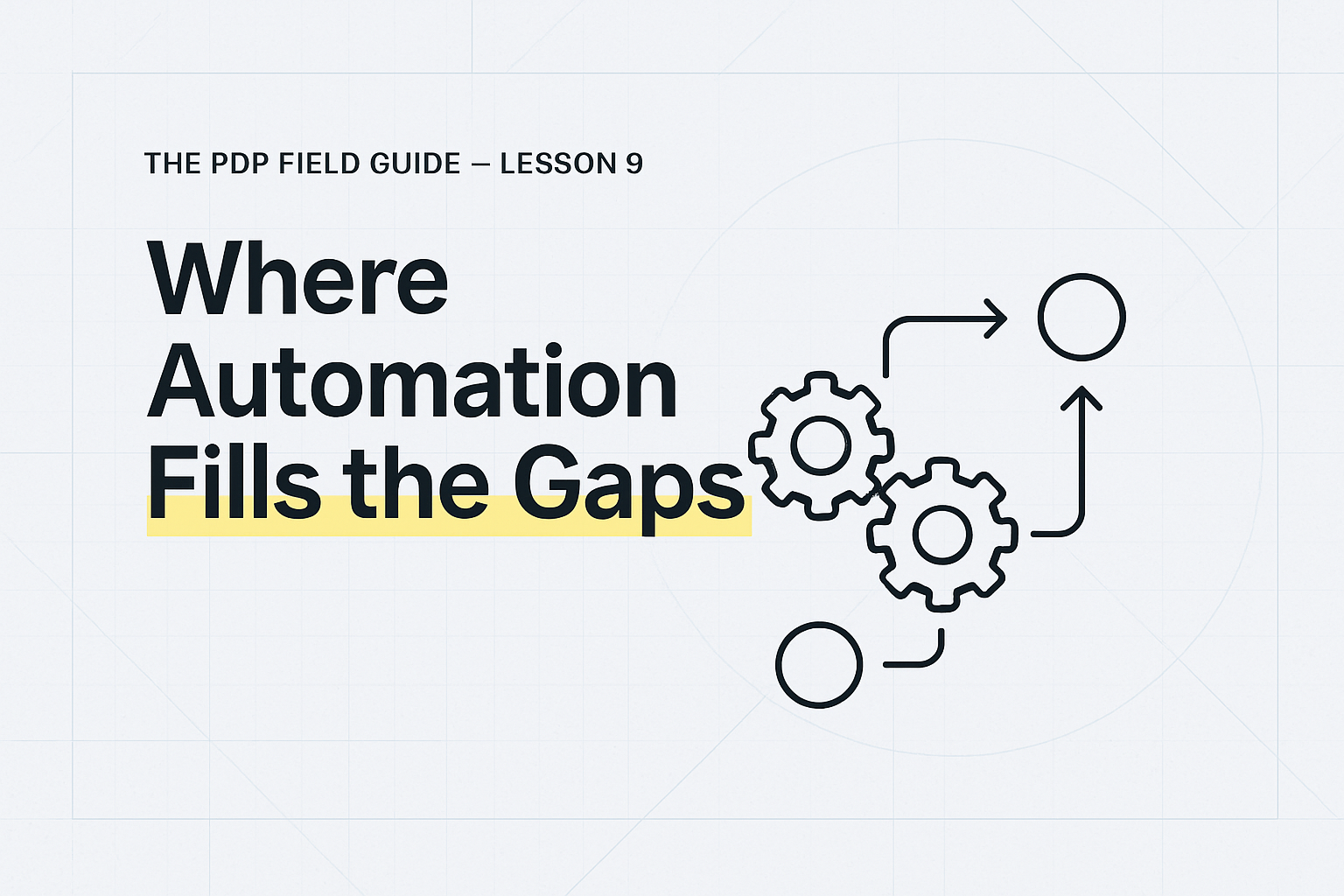.png)

Price Sync
Keep PDP, Feeds, and Marketplaces in Parity
If your product page ≠ feed ≠ marketplace, AI and shopping surfaces won’t trust you. “Price Sync” keeps price and availability identical everywhere, in near-real time.
⚡️TL;DR
- Why it matters: LLMs/feeds drop sources that disagree with themselves. Parity is table stakes for eligibility and trust. See LLM Readiness.
- How to do it: Map price/availability at the field level → wire a Sync Engine (webhooks + feed diffs) → enforce with alerts and a Parity Score.
- Ship list: Structured PDP Fields, Product Schema (offers/price/availability), JSON-LD, and a monitored /offers pipeline.
- Win condition: Parity Score ≥ 0.99 across PDP ↔ feed ↔ marketplaces. If not, fix the source and re-sync.
1) What “Price Sync” means (exactly)
Price Sync is the discipline and automation that keeps a product’s price, availability, and (optionally) promo price consistent across:
- PDP (your product detail page)
- Feeds (Google Merchant Center, social/affiliate feeds)
- Marketplaces (Google Shopping, Amazon, Walmart, etc.)
It’s one slice of overall parity (price, availability, variant set). See Parity and Variant Parity.
2) Why it matters to AI & shopping surfaces
- Eligibility: Inconsistent price/stock causes disapprovals and suppressed impressions in shopping feeds.
- Trust: LLMs/answer cards skip or summarize without citing sources that contradict themselves. See It Was SEO the Whole Time.
- UX & revenue: Nothing kills conversion like “$129 here, $139 there.”
Back it with machine-readable fields: Product Schema with offers.price, priceCurrency, availability, priceValidUntil (if used) to qualify for a Product Rich Result.
3) Symptoms you have a Price Sync problem
- PDP shows $129, Merchant Center shows $134, marketplace shows $137.
- “In stock” on PDP; Out of stock in feed.
- Sale price on PDP; regular price in feed.
- Frequent feed disapprovals or “Conflicting price” errors.
- Support tickets: “Cart price different from ad.”
4) Implementation Blueprint (copy this)
Source of truth: PIM/ERP (or pricing service)
Targets: PDP → Feeds → Marketplaces
Step 1 — Map the fields
- PDP HTML: render canonical
priceandavailabilityin the UI and in JSON-LDProduct/Offer. - Feeds: include
price,sale_price,sale_price_effective_date,availability,link,gtin/mpn/sku. - Marketplaces: match their spec; keep one canonical rounding rule.
Step 2 — Wire a Sync Engine
- Triggers: webhooks from PIM/ERP on price or stock change; scheduled diff jobs to catch misses.
- Transport: API → PDP cache bust → regenerate feeds → push to marketplaces.
- Order: update PDP first, then feeds, then marketplaces (so everything converges to PDP).
- Safeguards: block publishes if any target lags > X minutes or parity would drop < threshold.
Step 3 — Validate & monitor
- Compute a Parity Score every run:
score = (price_match + availability_match + variant_match) ÷ 3
Ship when ≥ 0.99; alert when < 1.00. - Log changes; keep diff history per SKU.
- Alert channels: Slack/email with direct links to the SKU on PDP + feed + marketplace.
Step 4 — Prove it to machines
- Serve valid Product Schema on the PDP, pass Schema Validation, and keep Field Consistency with internal links/crumbs.
5) Launch Checklist (copy/paste)
- ✅ PDP renders one canonical price (incl. currency) and availability.
- ✅ PDP exposes Product → Offer in JSON-LD.
- ✅ Feeds/marketplaces receive the same values (no hidden taxes/fees mismatches).
- ✅ Sync Engine configured (webhook triggers + scheduled diffs). See Sync Engine.
- ✅ Guardrails: MAP rules, rounding, timezone/currency normalization, promo windows.
- ✅ Monitoring: Parity Score, “conflicting price” errors, Feed Drift alerts. See Feed Drift.
- ✅ Breadcrumbs & entities resolved (brand/model) for citation trust. See Breadcrumb Schema.
6) Governance & Edge Cases
- MAP / contract pricing: enforce minimum price; annotate reasons for deltas (and exclude from ads if required).
- Currency & regions: normalize at render time; store canonical base currency; set
priceCurrency. - Promo price: always send both
priceandsale_priceand a valid window. - Bundles / kits: precompute effective unit price to avoid “conflicting price” flags.
- Tax/shipping: keep policy consistent in PDP vs. feeds (don’t embed tax in one and not the other).
- Time zones: use a single zone for pricing windows; do not let cron drift create temporary mismatches.
7) KPIs to watch
- Parity Score (site-wide, daily): target ≥ 0.995.
- Conflicting-price disapprovals: 0 per 1,000 SKUs/day.
- Time-to-convergence: minutes from change → full parity across targets.
- Eligible impressions / CTR on shopping placements post-parity.
- Refunds / CS tickets from price mismatch (downward trend).
8) FAQ
Is Price Sync the same as “price matching” competitors?
No. This is internal parity—your properties matching themselves.
Do I need a separate microservice?
If you have >5k SKUs or >2 targets, yes. Put it behind a Sync Engine with webhooks + diffs and an operator UI.
Will schema alone fix it?
No. Schema makes it readable; parity makes it trustworthy.

